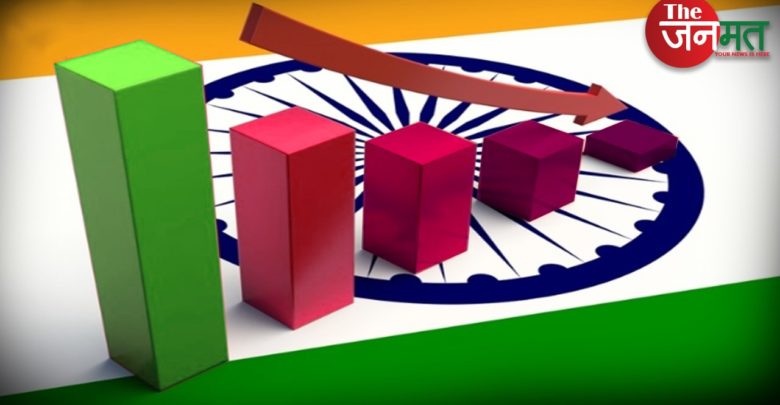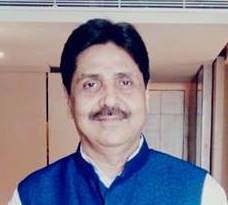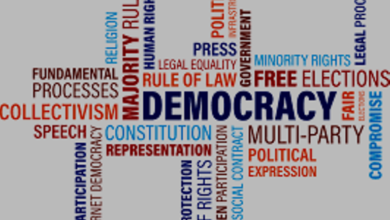Wrong Economic Policy of PM Narendra Modi Led To Economy Slowing Down
The two reasons why this (slowdown) is happening are a shortage of professionalism and a disproportionate focus on big businesses and their interests.

Noted economist and Carl Marks Professor of International Studies at Cornell University, US, Prof Kaushik Basu, expressed disappointment over unemployment data being held back and underlined indications of an economic slowdown in the country. However, he expressed optimism about India’s economic strength given the strong fundamentals. “The two reasons why this (slowdown) is happening are a shortage of professionalism and a disproportionate focus on big businesses and their interests. The first pertains to reason and the second to morals. Professionalism means policy-making based on data and reasoning. The economy is too complex to be handled by hunch and gut feeling.” Let us understand what the signs are which is present to suggest us that the Indian economy slowing down:
1. Sales of Maruti Suzuki, the largest carmaker, and Tractor sales for Mahindra have declined in December 2018. Two-wheeler sales too started crawling since December.We should go in slight detail about this slow down with some statistics. Anecdotal evidence collected by analysts then is showing up in micro and macro numbers now. For instance, after posting double-digit growth rates of about 14 per cent in passenger vehicle sales during April-June 2018, Maruti Suzuki, the largest carmaker, witnessed declining sales for most months except October 2018 and January 2019, when it posted less than 2 per cent growth. Tractor sales for Mahindra, which has a 40 per cent plus market share, declined in December 2018, were flat in January this year and dropped in February too. Two-wheeler sales started crawling since December. In February, the two biggest two-wheeler producers, Hero MotoCorp and Honda Motorcycle, which account for three-fourths of industry volumes, reported lower sales. Earlier this month, Maruti Suzuki cut car production for March by over 25 per cent. Maruti’s announcement sounded the alarm bell.
2. There are signs of a consumption slowdown spreading to non-discretionary items such as food items. Thus far, it was feared to have impacted only discretionary expenditure – in products such as cars and consumer durables. What are worrying economists and analysts now are signs of a consumption slowdown spreading to non-discretionary items such as food items. Thus far, it was feared to have impacted only discretionary expenditure – in products such as cars and consumer durables. At the end of the day, India continues to be a consumption-led economy. Consumption expenditure contributes almost 56 per cent of the country’s GDP.
3. Macro indicators too aren’t presenting any encouraging signs either. First, eight core segments — steel, cement, fertilisers, coal, electricity, crude oil, natural gas and refinery products, which together make up about 40% of industrial production – grew at 1.7 per cent in January this year, compared with 2.8 per cent in the previous month. Therefore, macro indicators too aren’t presenting any encouraging signs either. In the corresponding month i.e. January 2018; it had grown 7.5 per cent.
4.The GDP growth rate in the first three quarters (April-June 2018, July-September 2018 and October-December 2018) of the current financial year ending March 2019, the Central Statistics Office estimates, was 8 per cent, 7 per cent and 6.6 per cent, respectively. This clearly shows a trend of sequential slowing down and these numbers corroborate the signals that have been visible on the ground.
WHY IT IS SLOWING DOWN
The demand for passenger vehicles slowed down during the second half (beginning September 2018) of this financial year because of many reasons namely, high interest rates, higher fuel prices and lack of credit. At a very broad level, demonetization ,a radical policy decision and introduction of Goods and Services Tax , a structural reform naturally had an adverse impact on the economy. Over the last two years, bank credit slowed down dramatically because banks had to make higher provisions for bad loans. There has been around six public sector banks under the central bank’s prompt corrective action framework, and some others voluntarily having pressed the pause button on lending, retail and businesses found it quite difficult to access credit. Poor bank credit, liquidity crisis and high interest rates all created a huge drag on the economy. Non-banking finance companies compensated for this till the middle of 2018, when a default by IL&FS plunged the NBFC segment into a liquidity crisis. All this while, interest rates continued to remain high. Poor bank credit, liquidity crisis and high interest rates all created a huge drag on the economy. It has been like running a hurdle race set along a steep path with 50 kg on your back, says the CEO of a large mutual fund.
SHOULD WE WORRY ABOUT THIS SLOW DOWN
A slowing economy always hurts. Put simply, it affects income of people, and does not create jobs. In January this year, the government revised the growth forecast for 2017-18 to 7.2 per cent from the earlier estimate of 6.7 per cent. It also revised the actual growth rate in 2016-17 (the year of demonetisation) to 8.2 per cent from 7.1 per cent estimated earlier. These sharp revisions were heavily contested by economists. In 2014-15 and 2015-16, the first two years of the current government, the economy grew at 7.1 per cent and 8.2 per cent, respectively. The government expects the economy to grow at 7 per cent in 2018-19, which is slower than 7.2 per cent in 2017-18.
STATE OF WORLD ECONOMY
To put things in perspective, let us look at what is happening across the globe. After growing at 3.1 per cent in 2017, the world economy is estimated to have slowed down to 3 per cent in 2018, and the outlook for 2019 suggests it will slow down to 2.8 per cent over the next two years. The prospects over the coming three years for both the US and the Euro zone are uninspiring and pointing to continuous slowing down. China’s GDP growth rate is expected to drop to 6 per cent in 2021 from 6.5 per cent in 2018.
IMPACT OF THIS SLOW DOWN IS MORE DANGEROUS TO A CYCLIC ECONOMY
India’s stock markets rallied nearly 7 per cent in March, sending the benchmark Sensex to a new peak as foreign portfolio investors (FPIs) brought in Rs 34,053 crore, the largest monthly inflow in the stock market’s history. The previous high was Rs 30,906 crore in March 2017 the Sensex has gained 2,678 points during the month despite uncertainties surrounding the general elections. The impending slowdown in US may lead to cut in rates. Therefore, foreign investors are betting on high-growth India. Their hope of political stability trumps fears of uncertainty, at least for now. How long will the flow last? FPI money is hot money; it can exit quickly if circumstances change as we have seen in the past that around 85000 worth US $ exited Indian market and got itself parked in USA

UMA SHANKER SINGH IFS, PhD | Social Activist
डिस्क्लेमर (अस्वीकरण):इस आलेख में व्यक्त किए गए विचार लेखक के निजी विचार हैं. इस आलेख में दी गई किसी भी सूचना की सटीकता, संपूर्णता, व्यावहारिकता अथवा सच्चाई के प्रति theJanmat.com उत्तरदायी नहीं है. इस आलेख में सभी सूचनाएं ज्यों की त्यों प्रस्तुत की गई हैं. इस आलेख में दी गई कोई भी सूचना अथवा तथ्य अथवा व्यक्त किए गए विचार theJanmat.com के नहीं हैं, तथा theJanmat.com उनके लिए किसी भी प्रकार से उत्तरदायी नहीं है..




